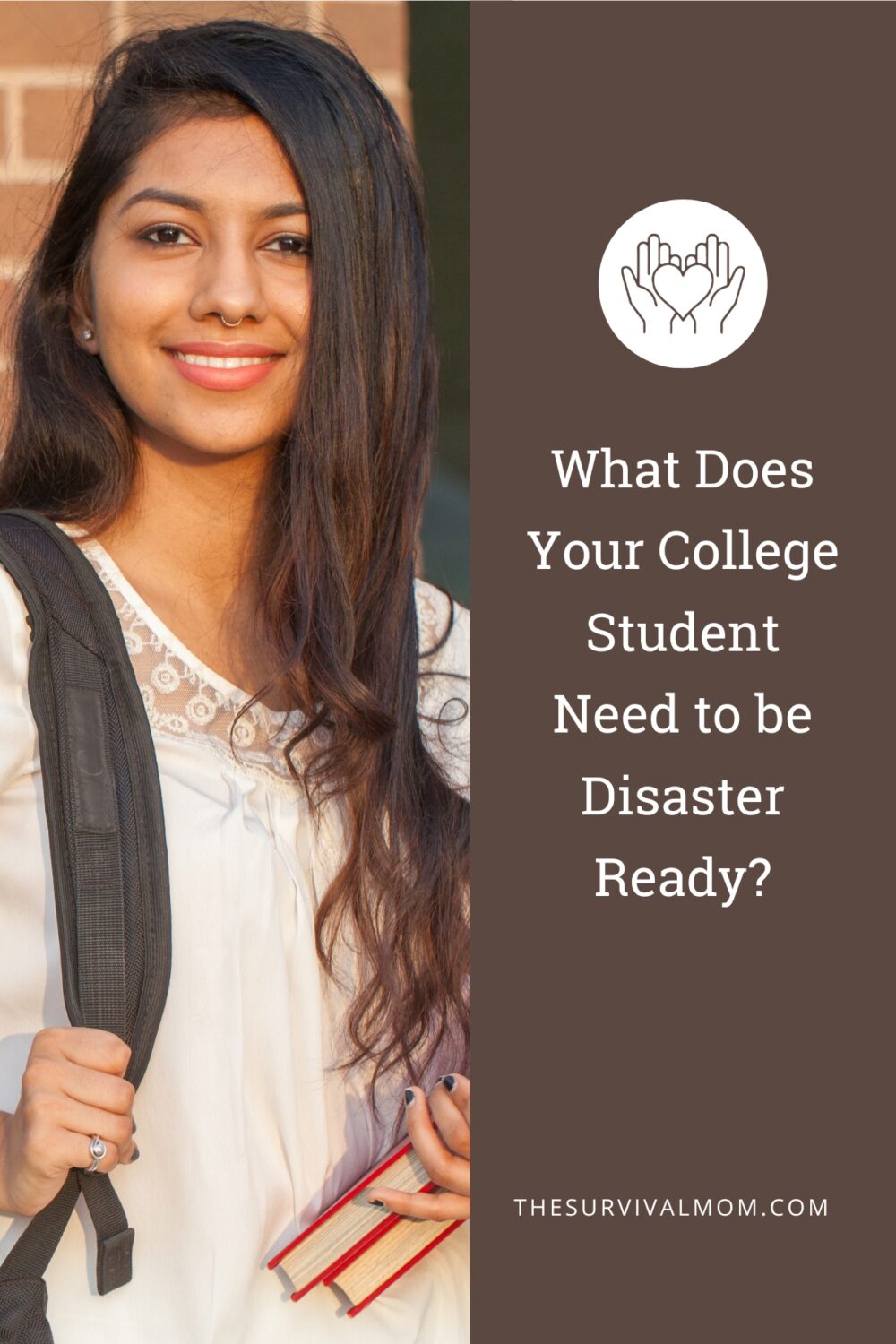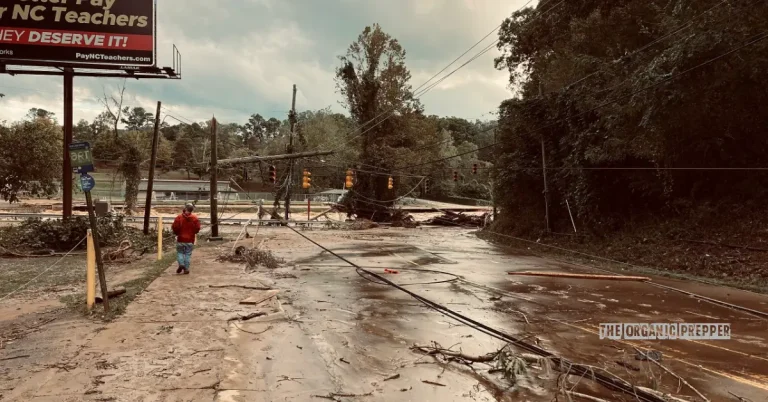Some of the links in this post may contain affiliate links for your convenience. As an Amazon associate I earn from qualifying purchases.
Imagine being in college, where you learn exciting things and make new friends. From big classrooms where you learn to cozy dorms where you sleep, college has lots of great moments. Yet, there’s a chance that things might not always go as planned. That’s why it’s really smart to prepare students for campus emergencies.
Campus emergencies may be weather-related dangers, involve an active shooter, a pandemic, a hostage situation, fires, etc. Here’s how you can help your student get ready and and know what to do to handle these and other tough situations in college.
Area-specific Hazards
Many young people go to college hours from home. Living in a different time zone isn’t unusual, and some students spend time abroad. All of this means they’re vulnerable to new types of threats. The new location may bring new natural disasters as well, and even the ones they grew up with may require a different response, especially if the new area is lot more urban or rural. Making sure they know the basics of how to handle these disasters should be your first step, and you should start working on it with them as soon as they graduate from high school, if not sooner.
The big headline-inducing disasters are the ones that come to mind first. If your child is moving to the Gulf Coast, hurricanes pop to mind. If they are going to California, then earthquakes become a new concern. Did you ever consider what they will do if there is a mudslide near their new home? Or a wildfire or flooding shuts down the highway? You may live in an area with four seasons, but if they go several hours farther north, are they really equipped (in gear and mindset) for how much colder the winter can be?
Spend a little time searching for information about the area where they will be living. A chart of average monthly temps will give some good information, but a search on “school closings” for the local school district will tell you much more of what you need to know than simply looking at a map. Schools, especially elementary schools, close whenever the weather is considered too dangerous to drive or be out in. If the only closure was for weather at -15 degrees, that’s a very different situation than a school district that closed for “poor air quality” due to wildfires or one that closed for excessive cold at 5 degrees (above zero) and heavy snow (4?).
This also applies to wherever they may travel on breaks, so educate them about staying safe during spring break fun.
All of this means they’re vulnerable to new types of threats.
Emergency Response Plan
Most colleges in this day and age have some form of emergency response plan. They may even have an entire department devoted to the reviewing, updating, and exercising the plan. Contact the college or search its website to learn exactly what they have in place. There should be a comprehensive emergency response plan to include the:
- big picture plan, including evacuation procedures and checklists
- directory of emergency contact information
- emergency notification system, including lockdown procedures
- specific emergency scenarios (help for determining the areas hazards as mentioned in the previous section)
- recovery and reporting
Review the emergency response plan with your student and bookmark it for yourself. If an emergency does occur, you’ll have a better idea of how the school is handling it and what actions you can take.
Personal Safety Measures
Another way to prepare your student for campus emergencies is to encourage them to adopt practical safety habits. Doing things like walking with friends at night or staying in well-lit places can really help keep you safe. Also, they must remember to take care of their stuff and pay attention to what’s happening around them. Ultimately, they’re responsible for their own safety. If you’re sending your daughter away to college, then have them learn about safety for women.
They should also meet their dorm or resident housing staff and know how to quickly contact them.
Emergency Communication Channels
School
Ensure your student is aware of all the ways the college may communicate with them in an emergency situation. These tools let students know quickly if there’s a problem or danger. It’s really important to sign up for these alerts so you can get important information right away. Colleges usually send messages through texts, emails, or special apps to let you know what’s happening and what you should do.
Ensure your student is aware of all the ways the college may communicate with them in an emergency situation.
Parent or Guardian
In addition to emergency communication channels on campus, it’s a smart idea to create a special plan for students to stay in touch with you during emergencies. This plan could include important information like their phone numbers and email addresses. (Not a bad idea to have them written down somewhere, too.)
Cell lines are usually clogged in an emergency. Text messages are far easier to get through, but I know I wouldn’t want to be checking every cell phone in the house for possible text messages from an out of state child. Telling them a specific phone to text, and an alternate if no one replies within a set time (ten minutes, an hour, six hours – whatever you agree is reasonable) should make it easier to get in contact.
In addition, think about having a person who lives far away from both you and your parents, someone like an aunt, uncle, or family friend. This person could help relay messages if it’s hard to reach your parents directly. Share this plan with your parents and the out-of-area person, so everyone knows what to do if something unexpected happens. This way, you’ll have an extra layer of support to keep you safe and connected, no matter what.
If you’re on social media, follow your student’s school. And if you can get the names and numbers of your child’s roommates or close friends as well as their parents info, those are added communication channels. Make sure they have your contact info also. It works both ways!
Evacuating
College students need an evacuation plan beyond a mere dorm evacuation in the case of a fire. If your child had been in New Orleans when Katrina approached or in Northridge when the quake hit, would they have known where to go and how to get there? Probably not. This book is a one-stop-shop for everything you need to know when planning for an evacuation.
Work with your student to create a plan for them to get home if they have to evacuate ahead of an impending disaster and alternate routes to use if one is no longer safe. Laminate the evacuation routes and put it in their emergency (car) bag, along with physical maps (not electronic ones) for their entire route. They will undoubtedly think they don’t need paper maps because they have an app on their phone and GPS, but those can go down, or run out of batteries, in an emergency.
AAA provides free state, area, and city maps to their members. These are great for planning evacuation routes, as is a printed version of a MapQuest or other online set of directions. A topographic map is an outstanding resource for this because it shows terrain features as well as parks, campgrounds, and more. If there are places for them to stop en route, friends and family, campgrounds, public parks, etc., be sure to mark them on the map and talk about them in advance with your child. They may not remember, but at least you’ve tried. These NatGeo topographic maps are free and can easily be printed, or a DeLorme Atlas offers a plethora of route planning advantages.
Before you laminate the map, write down how they should communicate with you, as discussed earlier.
Emergency Binder
Assemble all of this information into an emergency binder. Use this grab-and-go binder as a template and customize for your student.
Emergency Kits
College students need more than one emergency bag.
Car emergency bag
Assembling a car emergency bag is important for students who are driving away to college on their own. This collection of essential items is like a safety kit for the road, helping you be ready for any unexpected situations while you’re driving. These supplies can be super helpful if your car has trouble, you get stuck, or things don’t go as planned. I wrote a whole article detailing what we packed in my daughter ‘s car for her trip to college.
Also, be sure they have the basics for any car such as jumper cables and flares. If they travel to and from school another way (train, airplane, carpool), modify the supplies to suit those needs and be sure to consider TSA requirements. If they do fly, they should also learn about how to handle air travel disruptions.
Dorm room emergency bag
This bag holds essential items that can come to the rescue during unexpected situations. The suggested items are in addition to the car bag. This kit should include a safe way to heat food, a mess kit they aren’t likely to pull out to use in their room (an empty plastic container with disposable utensils is good), and a face mask to help reduce viral infections.
Medical supplies
College kids may be far from home, but they’ll still get sick and injured. Travel size bottles of ibuprofen, aspirin, Benadryl, etc. only contain a few pills and a big wad of cotton, but small bottles are better suited for small spaces. You can fill them from larger bottles.
Think about what medicines your child routinely needs at home and include some of the essentials to get them started, such as:
- cough and cold
- fever reducing
- headache medicine such as Tylenol
- ibuprofen
- Gas X
- Pepto Bismol
- Benadryl
- thermometer
- bandages of all sizes, including one Ace-style
- topical antibacterial or the just as medically effective honey
This may seem like overkill, but you won’t be there if, and when, they get sick. Include Benadryl even if your child doesn’t have any known allergies because they will be encountering new food and new airborne allergens. Also, colleges have a student health center with a campus nurse, so they can access medical care if needed.
In college, I remember going to work at a temp job with a fever that was easily 103 because the office had air conditioning, my apartment didn’t, and it never even occurred to me or my roommates that I could get medicine to reduce my fever. (I also lacked a thermometer.) If I had had medicine in my room, I would have taken it and stayed home.
Food and water
Best of luck keeping emergency food and water in a college student’s room, especially food. The reality is that they will end up eating it as a snack or because they either don’t want to go to the dining hall or are rushing to meet a forgotten deadline. That doesn’t mean impossible, just challenging. On the other hand, if you restock them every time you visit, at least you know they have something other than (or in addition to) Ramen for those meals.
If they are like most kids, especially freshman, they’ll be on a meal plan and it won’t allow them to take food back to their room from any all-you-can-eat buffets. (Again, good luck with that.) However, most will have other options that allow them to take their food with them, possibly including pre-packed options. If there is a true emergency and they need to evacuate, using their meal plan to get as much food as they can carry (and their plan allows) from one of those locations right before they leave is a smart plan.
A turkey sandwich won’t last long on a hot day, but it will last a lot longer when it’s cool outside or an insulated bag is used to carry it. If they have a supply of food, then they can share with friends going in the same direction. Easy to carry fruit, especially apples, is readily available in meal lines, as are oatmeal, breakfast cereal, granola bars, and assorted meal replacement bars.
A stash of canned food under the bed isn’t a bad idea, either. If there is a shelter-in-place order (and hence there is still electricity) then an innovative tool like the mini HotLogic can also be a game-changer. It’s a compact, portable electric lunchbox that can warm up their pre-packaged meals. It’s one of a number of small appliances that are useful for cooking after disasters. When combined with a microwave, a whole world of emergency food options is available.
Final Thoughts
You can ensure your student is prepared for college life AND an on-campus emergency. Take the initiative to help them create a emergency kits, familiarize them and yourself with campus safety procedures, and establish reliable communication channels with them. Just because our kids go off to college or move out on their own, doesn’t mean we ever stop worrying about them. If they’re prepped for a variety of emergencies, mom and dad will be able to rest just a little easier.
What do you do to prepare your student for campus emergencies?
Originally published August 21, 2017

















